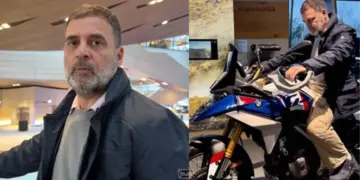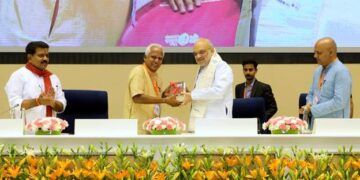A home is not simply four walls and a roof; it represents dignity, security, and stability. In a region like Jammu and Kashmir, there has always been, and continues to be uncertainty and fluidity in living conditions, being able to own a pakka house was just a distant aspiration for many. However, this dream is now taking shape through concrete, brick, and mortar. This is because of the Pradhan Mantri Awas Yojana (PMAY).
Launched in 2015, PMAY is the flagship housing scheme of the Government of India working towards providing housing for all initially by 2022. Although the housing programme has significance for all citizens across the breadth and width of India, it is symbolic in the valleys and hills of Kashmir that have demonstrated the power and meaning of PMAY in the stipulating change in housing quality from kachcha to pakka.
In the Himalayan villages of Kupwara, Baramulla, Anantnag, and Pulwama, where development has suffered from isolation and geography and, at times, conflict, PMAY-Gramin is having a quiet revolution. PMAY-Gramin is focused on the homeless, those living in dilapidated kachcha houses, and provides financial assistance of ₹1.2 to ₹1.3 lakh per unit, plus they converge with other welfare schemes like MGNREGA, Swachh Bharat Abhiyan, etc.
The construction is usually performed by beneficiaries and local workers, ensuring transparency, participation, and encouraging wealth creation in villages.
Urban centres in Kashmir, including those such as Srinagar, Jammu, Sopore, and Budgam, have already gained from PMAY-Urban (PMAY-U) that highlights slum rehabilitation, credit-linked subsidies and affordable housing projects in a public-private partnership. Such components are urgent in the context of a country as India whereby urbanisation is increasing, but the background of urban infrastructure is so often inadequate.
A major component under PMAY-U is the Credit Linked Subsidy Scheme (CLSS), that allows lower and middle income families to avail of a home loan at a subsidised interest rate. The Credit Linked Subsidy Scheme has opened up thousands of families to have homes in urban Kashmir and to, at some level, afford dignified housing as many are first-time home buyers.
Thousands of beneficiaries in the Srinagar and Jammu Divisions of clingene and south Kashmir have benefitted from the subsidy from PMAY-U which continues to boost home ownership in the union territory.
Although PMAY has achieved various successes, its rollout in Kashmir has not been smooth sailing, and several challenges are present. Delays in transferring funds, inclement weather, lack of connectivity in rural places and, in some cases, complexities related to land ownership have contributed to a slow rollout in select districts.
In addition, there remains some gaps in public knowledge regarding eligibility and supporting documentation in parts of the valley. The local government however is moving to raise awareness and is facilitating camps to ensure the maximum enrolment process and timely approvals.
In the last couple of years, the UT government has expedited housing construction under the PMAY program. Information from the Rural Development Department revealed that more than 10,000 houses have already been built. Additionally, a significant number of homes are under construction. The reimbursals, satellite monitoring, geo-tagging, and electronic payment provide an unprecedented layer of transparency and responsibility.
But beyond bricks and beams, the PMAY initiative in Kashmir has a bigger message. Here, in a region with a prolonged legacy of conflict, a stable home represents more than security – it represents roots. When individuals occupy their own homes they will start to make investments in their environment, feel more assured in the education of their children, and contribute more substantially to positive community activity.
Experts have suggested that development-led peace is the future for Kashmir, and programs like PMAY are crucial pieces in the puzzle.
PMAY is more than a housing program for Jammu and Kashmir—it is a lifeline: a demonstration to the government’s commitment to bringing development to the doorsteps of the poorest and most excluded populations. The ongoing challenges notwithstanding, the changes on the ground in both rural and urban contexts are slowly changing narratives and lives.
As more families transition into safe and dignified homes, one thing is certain: when you build homes, you’re not just building houses you’re building lives.
telijazib33@gmail.com




